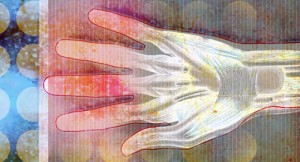 Editor’s note: The 2020 ACR State-of-the-Art Clinical Symposium, which was originally scheduled to be held in New Orleans March 27–29, was moved to an online format to accommodate social distancing requirements during the COVID-19 pandemic.
Editor’s note: The 2020 ACR State-of-the-Art Clinical Symposium, which was originally scheduled to be held in New Orleans March 27–29, was moved to an online format to accommodate social distancing requirements during the COVID-19 pandemic.
ACR BEYOND LIVE—The hallmark of many rheumatologic conditions is their insidious onset and slow progression over time. Indeed, rheumatology is quite different from critical care medicine, in which patients are often acutely ill and require immediate medical intervention. This is not to say that autoimmune disease is without its share of medical emergencies.
During the 2020 ACR State-of-the-Art Clinical Symposium, Francesco Boin, MD, professor of medicine, Division of Rheumatology, University of California, San Francisco (UCSF), and director of the UCSF Scleroderma Center, provided an overview of recognition and management of three emergent situations for patients with scleroderma: critical digital ischemia, scleroderma renal crisis and intestinal pseudo-obstruction.
Critical Digital Ischemia
Raynaud’s phenomenon is almost universally present in patients with scleroderma and normally can be managed with first-line agents, such as calcium channel blockers, phosphodiesterase inhibitors and prostaglandins (frequently used in Europe). However, rather than experiencing reversible vasospasm, some patients may have vessel occlusion over time. Characterized by endothelial activation, microthrombi formation and chronic vasculopathy—either obliterative or ischemic—this condition may cause significant complications.
The clinical signs of critical digital ischemia include a dusty color of the distal digits and persistent digital pain that cannot be relieved with typical treatments. Small vessels can be affected, as well as medium-sized arteries, such as the ulnar artery. (Note: Given the possibility of poor collateral perfusion from the ulnar artery and risk of ischemia to the hand, patients with scleroderma should avoid having radial arterial lines placed whenever possible.)
When critical digital ischemia is detected, the immediate advice of treating clinicians should include rest, warmth and pain control with analgesics and digital block. Physicians should maximize vasodilative therapy with calcium channel blockers, phosphodiesterase type 5 (PDE5) inhibitors and prostacyclin infusion, if available and needed. Anti-platelet therapy with aspirin or clopidogrel can help prevent further damage. The benefits of anticoagulation and fibrinolytics remain unclear.
The most essential aspect of care is preventing advancement of ischemic territory. This may require surgical intervention.
Scleroderma Renal Crisis
Dr. Boin also discussed scleroderma renal crisis, which can present as the first manifestation of scleroderma in up to 20% of cases.1 Risk factors for scleroderma renal crisis include early diffuse cutaneous involvement of scleroderma, the presence of antibodies to RNA polymerase III, and exposure to corticosteroids or cyclosporine. Hallmark features include newly elevated blood pressure, acute renal failure, evidence of malignant hypertension, and hemolytic anemia and thrombocytopenia.
Dr. Boin noted that atypical presentations of scleroderma renal crisis are possible as well. For example, patients in the early stage may have hypertension without renal failure or, in other cases, may manifest renal failure without hypertensive crisis. Less overt signs of malignant hypertension, such as asymptomatic pericardial effusion or arrhythmias, and signs of thrombotic microangiopathy can be present even in the absence of renal failure or hypertension.
When renal crisis is suspected, baseline laboratory studies, such as complete blood count, basic metabolic panel and urinalysis, must be collected for comparison to repeat testing as the disease progresses.
In most cases, hospitalization is required, and treatment with an angiotensin-converting enzyme (ACE) inhibitor should be started immediately, with the addition of angiotensin receptor blockers (ARBs), calcium channel blockers and any other antihypertensive medications needed to lower blood pressure by up to 20 mmHg per 24 hours. Other vasodilators, such as endothelin receptor antagonists and prostacyclin antagonists, may also be considered.
Dr. Boin advocates for renal biopsy in most cases to confirm the diagnosis, measure damage and gauge prognosis. This may be important if advance treatments, such as eculizumab or plasma exchange (when thrombotic thrombocytopenic purpura [TTP] or atypical hemolytic uremic syndrome [HUS] are present) are to be considered.
Intestinal Pseudo-Obstruction
For the final scleroderma-associated emergency, Dr. Boin discussed intestinal pseudo-obstruction. This clinical syndrome is characterized by obstructive symptoms despite the absence of a mechanical etiology. For patients with scleroderma, this disorder is due to malfunction of intestinal propulsion.2
Several clinical features often accompany the onset of intestinal pseudo-obstruction, including an established history of gastrointestinal dysmotility, appearance of dysphagia, loss of appetite, abdominal bloating and diarrhea, and weight loss. As the condition progresses, patients often experience regurgitation of food, nausea and vomiting, abdominal pain and distension, absent or metallic bowel sounds, and profound anorexia.
The clinical evaluation of patients with intestinal pseudo-obstruction may raise concern for an acute surgical abdomen. The exam and imaging studies must be carefully reviewed by all members of the medical team in such cases (i.e., surgery, gastroenterology and rheumatology).
Intestinal pseudo-obstruction has multiple risk factors, and Dr. Boin specifically pointed out that opiate use is high on this list. Whenever possible, opiates should be avoided in patients with scleroderma. Management should involve strict bowel rest (with nothing by mouth), nasogastric decompression, intravenous hydration and correction of any electrolyte abnormalities. Antibiotics, such as rifaximin or ciprofloxacin, may be indicated to help alleviate features of small bacterial intestinal overgrowth (SIBO). Prokinetic agents are often helpful.
A dietician should be involved early in the course of treatment to ensure adequate nutritional support is provided. Dr. Boin explained that a prolonged course of parenteral nutrition is often indicated.
Surgical intervention should be reserved for refractory cases, instances of true mechanical blockage, perforation or intestinal necrosis.
In Sum
Dr. Boin was comprehensive and thorough in discussing these potential clinical scenarios that rheumatologists may encounter, particularly as consultants in the hospital and when working in interdisciplinary teams. A key theme was the importance of early recognition of the emergencies seen in patients with scleroderma. Rheumatologists need to be aware of the risk factors associated with these emergent conditions and the clinical findings that should lead to a high level of suspicion for such entities.
As Nobel Prize winner in economic sciences Daniel Kahneman once said, “Intelligence is not only the ability to reason; it is also the ability to find relevant material in memory and to deploy attention when needed.”3 Truer words could not be spoken.
Jason Liebowitz, MD, completed his fellowship in rheumatology at Johns Hopkins University, Baltimore, where he also earned his medical degree. He is currently in practice with Skylands Medical Group, N.J.
References
- Logee KM, Lakshminarayanan S. Scleroderma renal crisis as an initial presentation of systemic sclerosis: A case report and review of the literature. Clin Exp Rheumatol. 2015;33(4 Suppl 91):S171–S174.
- Ebert EC. Gastric and enteric involvement in progressive systemic sclerosis. J Clin Gastroenterol. 2008 Jan;42(1):5–12.
- Kahneman D. (2011). Thinking, Fast and Slow. New York: Farrar, Straus and Giroux.



